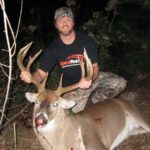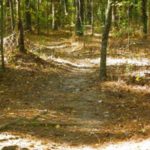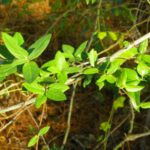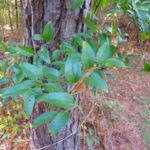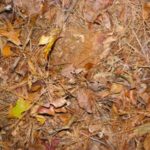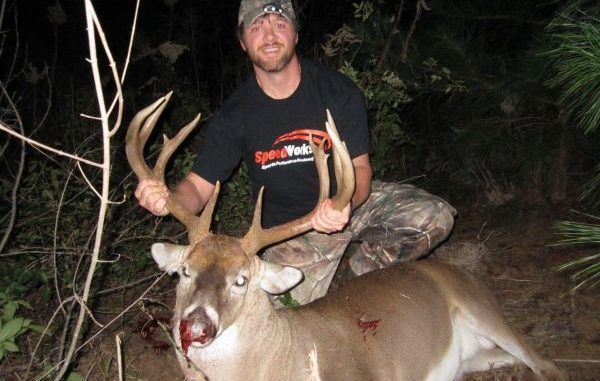
Moving into the final days of the hunting season, deer hunters have to change their game plans if they want to fill their tags.
It is often necessary to adjust the game plan at halftime when the Saints — or any football team, for that matter — are engaged in an important game.
If the defensive backs are locked in on the receivers every play, consideration is given to a few quick-hitters into the line by the running backs. Conversely, if the defensive linemen are clogging up the middle expecting a run, it’s time to air it out to receivers.
By the same token, as deer season reaches its final weeks, it’s often necessary for hunters to adjust their game plans. Why? Because the bucks are making adjustments, and if hunters don’t figure out what’s going on, they’re left wondering what the heck happened to the deer.
Bossier City’s Judd Chapman realized that changes were underway in his deer woods in Bienville Parish last season. After he sat on his stand day after day without seeing deer, he made a game plan change that resulted in downing a 13-point buck that scored over 150 inches.
Chapman figured out where the buck was bedding down during the day and where his food source was located. By abandoning his elevated stand and fashioning a ground blind along the route between the two areas, he was able to intercept the buck as it moved from one area to the other.
Early in deer season — prior to the rut — sitting in a box stand overlooking a food plot or feeder is a good way to put some venison in the freezer. However, hunters are not very likely to see mature bucks during daylight hours utilizing these sources. It can happen but it’s not likely.
Of course, once the rut kicks in and bucks allow sex to preclude security, the chances of seeing Mister Big in daylight improves significantly.
But what happens during the latter days of hunting season, after the rut is over? Bucks aren’t chasing does, unless the few does not bred during the first estrous cycle are still available. Basically, it becomes a rather difficult game to play as the bucks, exhausted and worn down from breeding does and fighting other bucks, become rather difficult to pattern.
For many hunters, if they don’t get their deer early, they hang it up after the rut and head for the lake where the bunched-up crappie are more predictable.
But there are still deer to be killed — if you make the right adjustment.
Scott Durham, deer study leader for the Louisiana Department of Wildlife and Fisheries, said an important change in the game plan for hunting deer late in the season is to concentrate on food sources.
“I hunt the late food sources and, if possible, the necks, drains or travel areas the deer likely utilize getting from sanctuary areas to the food sources,” Durham said. “Of course, it’s important to try and figure out how to get in and out of the area I’m targeting quickly and quietly.
“These deer have likely been pressured all season, and you have to really be cautious that you don’t alert deer to your presence both going in and coming out.”
Accomplishing that just takes some attention to detail.
“Factors to consider in setting up for a late-season hunt include the wind, among other things,” Durham said. “What are the prevailing winds as I go in and come out of the area? How is my visibility going to be? How many limbs or shrubs need trimming? Are there any scrapes still active?
“In a low-pressured area, there is the possibility I might catch one coming in to check a scrape, especially in Areas 1, 6 and 9 where you can still see some breeding activity going on.”
As far as food sources, Durham said it all depends on what area of the state you plan to hunt.
“I mainly hunt East Feliciana, and I find that Shumard oaks are the latest oaks to drop their acorns in the area,” he said. “As long as there are acorns on the ground, the deer are going to eat them.
“Toward the end of the season, I’ll hunt some bottomland tracts if I get the chance — Sherburne Wildlife Management Area is a good place to hunt late in season.”
Hunting on leased land offers even more opportunities.
“If I get the chance to hunt some private land, I look for patches or travel areas that have not been hunted previously,” Durham said. “If I’m hunting an area with a late rut, I’ll concentrate my hunting on the coldest days because this is usually when deer movement is at its best.”
Durham noted that many hunters shoot does on their food plots every chance they get, but in areas with a late rut he likes to be sure a few females are left to attract bucks.
And there are some areas of the state where late-season hunting has the edge over other regions.
“I like Areas 1, 6 and the upper part of Area 9,” Durham said. “The primary breeding dates here are late, taking place in December and January. The prevailing theory is that these deer evolved with Mississippi/Atchafalaya river spring flooding. Natural selection would have favored females that bred and dropped their fawns later after the flood waters have receded. Peak fawning here is July and August.
“The Mississippi alluvial valley is the best area of the state to hunt large-antlered deer due to the growth and development potential there. It’s all in the soils — high mineral levels correlate with higher body masses.”
When considering which wildlife management areas tend to provide better hunting late in the season, Durham listed Sherburne, Yancey, Buckhorn, Dewey Wills, Big Lake and Bayou Macon, with Thistlethwaite added to the mix.
As far as parishes in the state offering the best chance to tag a late-season trophy, Durham likes Avoyelles or Concordia because of the bottomland hardwood habitat, areas where hunters manage the herd to produce older aged bucks.
David Moreland, Durham’s predecessor who retired several years ago, added his thoughts to the best way to hunt bucks late in the season.
“In Area 2 — Northwest Louisiana — December generally marks the end of the rut,” Moreland said. “However, bucks may be looking for a few does that have not bred, but generally by mid-January, it’s over.”
This time of year in that part of the state, a game plan change is necessary to improve your chances at a good buck, according to Moreland.
“This is the time of year where hunting between the feeders may pay off as bucks move around looking for does,” he said. “In late December, the trails through the woods leading to food plots and feeders are generally quite distinct and visible, and this should be areas hunters ought to check out, determining where the deer are coming from and then locate a stand to catch the deer as they come to feed late in the evening.
“Bucks go back to the feeding mode once the rut is over and often will come out to feed right at last light, so hunters need to plan to stay until then. However, you can catch one staging up in the woods if you know where they’re coming from.”
Moreland offered another tactic that can work on tagging a late season buck: move the feeder.
“I like to change a feeder location or hang a bucket feeder in an area where you have seen deer but not hunted,” he said. “Keep in mind that prevailing winds this time of year are generally from the north-northwest, so your stand location should be in the south-southeast corner of the area.
“Again, hunters should stay on their stands until last light.”
Another tactic Moreland suggested is to improve food plots that are left once the season starts to wane down.
“With bucks going back to the feeding mode, you might want to consider adding some nitrate to the grass patches and keep them attractive,” he said. “Also, if the weather is good — clear and cold with high pressure — plan to stay on the stand longer than normal (on morning hunts).”
What about native browse plants? Hunters should definitely plan to utilize what Mother Nature has already put there.
“Since many of the woody shrubs and trees lose their leaves, the focus will be on those that still have them,” Moreland said. “Blackberry, privet and honeysuckle would be three to look for since these will tolerate the cold temperatures and put out new growth on warm days. I have especially seen heavy use of honeysuckle in Northwest Louisiana during late winter.”
He said learning what deer prefer in your area is as simple as learning from every deer you shoot.
“When you harvest a deer, check the stomach contents to see what they are eating,” Moreland said. “Plan your hunting strategy to place you in the area where these preferred plants grow.”
Want to be on the winning team when it comes to getting a late season deer in your sight picture? Be adaptable. Change your game plan to correspond to what the deer are doing.
